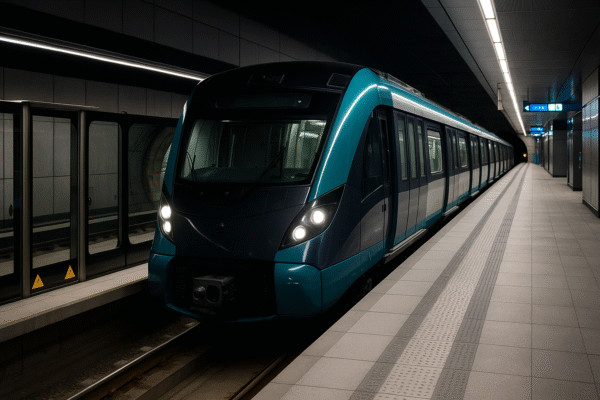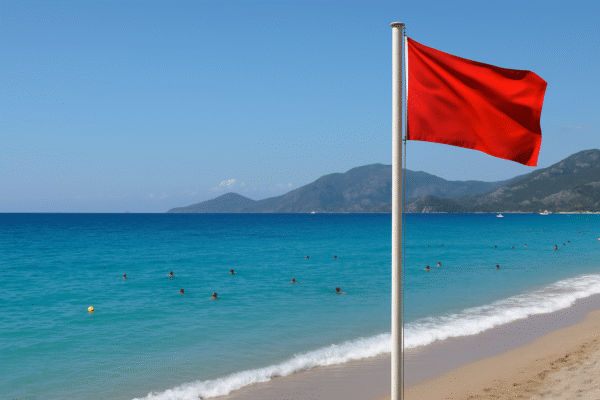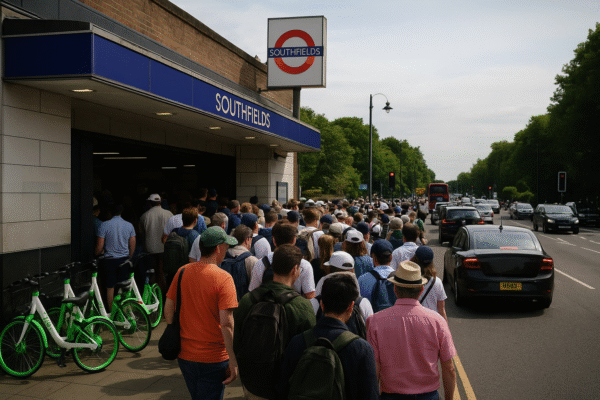The 2025 Wimbledon Championships brought more than just world-class tennis to southwest London — it also unleashed a wave of transport disruption that left locals and visitors stranded in queues, traffic jams, and overcrowded platforms. At the heart of the turmoil was Southfields Station, the closest London Underground stop to the All England Lawn Tennis Club (AELTC), where fans encountered severe District Line delays, pavement blockages from Lime bikes, and paralyzing traffic congestion.
Southfields Station Buckles Under Pressure
For two weeks every July, Southfields becomes the primary entry point for thousands of tennis enthusiasts. But this year, its infrastructure struggled to cope. On multiple occasions, District Line faults — particularly a track issue at Tower Hill — triggered cascading delays across the network, leaving packed trains stranded and platforms overwhelmed at Southfields, Wimbledon Park, and Earl’s Court.
According to Transport for London (TfL), passenger volume at Southfields quadrupled during the first week of the tournament. Despite extra staff on site and temporary signage to control crowd flow, the platform saw delays of up to 20 minutes per train, turning the usually quiet station into a crush zone.
Local vendor Tony McConnell, who operates a mobile coffee stand outside Southfields station, remarked, “We’re used to crowds, but this year it felt like the station was on the brink. One more fault and people would have started jumping barriers.”
Lime Bikes Add a New Layer of Congestion
Outside the station, Lime bikes, intended to offer sustainable travel options, became an unexpected hazard. With the sheer volume of arrivals, dozens of bikes were left abandoned across pavements, blocking pedestrian access and complicating entry for people with disabilities, families with strollers, and elderly spectators.
Southfields resident Alice Morgan noted, “It’s a good idea in theory, but the lack of drop zones or staff to manage the bikes made the footpath nearly unusable.”
TfL previously trialled e-bike “tidy zones” during other major events, but no such measure was implemented in Southfields this year, leading to widespread frustration.
Gridlocked Streets and Road Rage
While rail commuters faced long delays, those arriving by car fared no better. From 5 a.m., Wimbledon traffic jams choked the streets leading to the AELTC. Local business owners — usually beneficiaries of Championship footfall — reported difficulties even accessing their own storefronts due to taxi queues and temporary one-way restrictions.
Drivers on Wimbledon Park Road and Augustus Road were brought to a standstill for hours at peak times. Ride-hailing services surged in price and demand, with many visitors reportedly paying upwards of £45 for journeys as short as 3 miles.
Even delivery vehicles struggled. One local baker said, “Our suppliers had to walk the final stretch just to get fresh stock in. The roads were completely blocked.”
Concerns Over AELTC Expansion Intensify
The 2025 chaos has added fuel to the ongoing debate over the AELTC’s controversial expansion plans, which include an 8,000-seat stadium and 39 new courts in Wimbledon Park. Local campaigners argue that Southfields’ infrastructure is already buckling under the weight of current visitor numbers — and that expansion without major transport upgrades would be catastrophic.
Legal opposition to the plans continues. A spokesperson from the Save Wimbledon Park group commented, “We support the Championships, but not at the cost of local liveability. Without a strategic transport investment plan from TfL and the AELTC, this area cannot absorb more visitors.”
TfL Under Pressure to Deliver Solutions
In Parliament, Wimbledon MP Paul Kohler has called for urgent intervention. Speaking on the House floor last week, he asked TfL to publish a detailed transport resilience plan before any AELTC expansion is approved.
TfL has acknowledged the concerns. A spokesperson said, “We’re reviewing the Championship’s 2025 impact and will work with stakeholders to implement lessons learned. Proposals include wider pavements, bike docking enforcement, and real-time passenger monitoring.”
However, no concrete timeline has been released for implementation.
Looking Forward: Can Southfields Cope with Future Demand?
While some locals accept the annual disruption as a side effect of global attention, others say this year’s Wimbledon travel chaos went beyond what should be considered normal. Calls are growing for Southfields station to receive permanent upgrades, including improved platform capacity, digital crowd control signage, and additional exits.
Moreover, bike-sharing providers like Lime may face regulation during major events, including enforced geo-fencing or real-time bike removal to reduce clutter.
As one visitor from Manchester put it while waiting for a delayed train: “The tennis was phenomenal. Getting there? An absolute nightmare.”
For more travel news like this, keep reading Global Travel Wire















